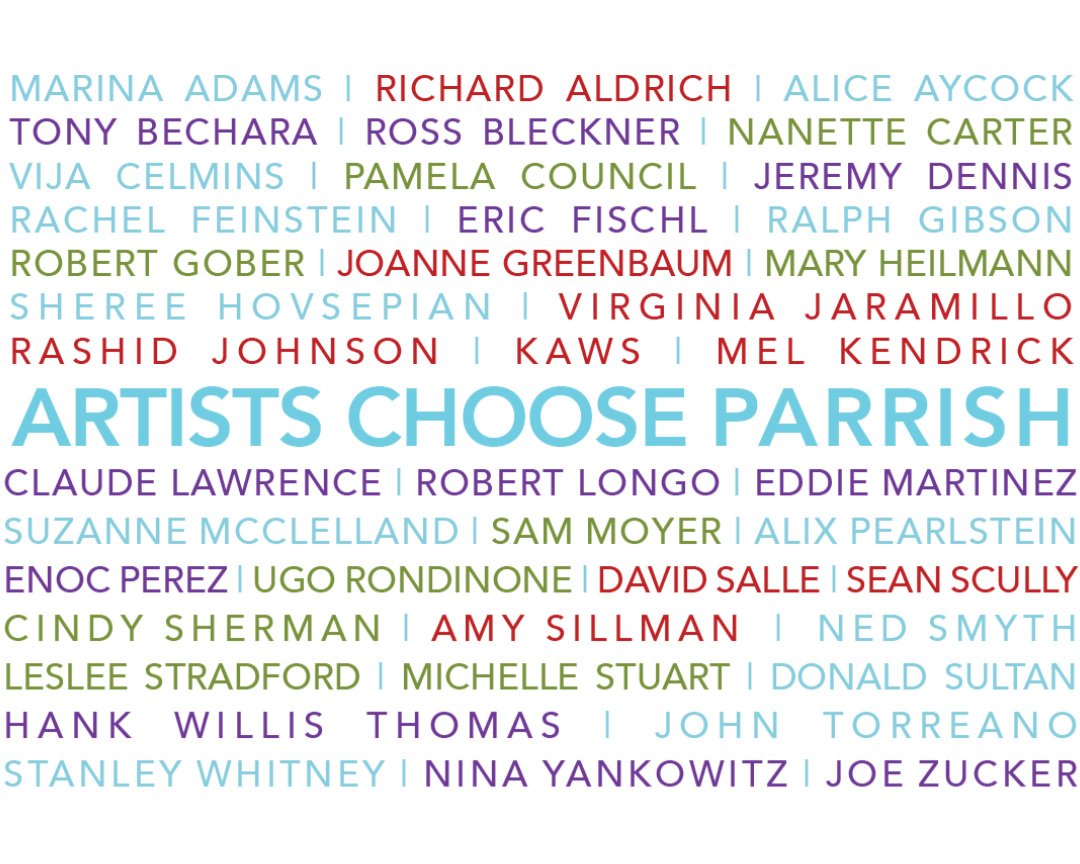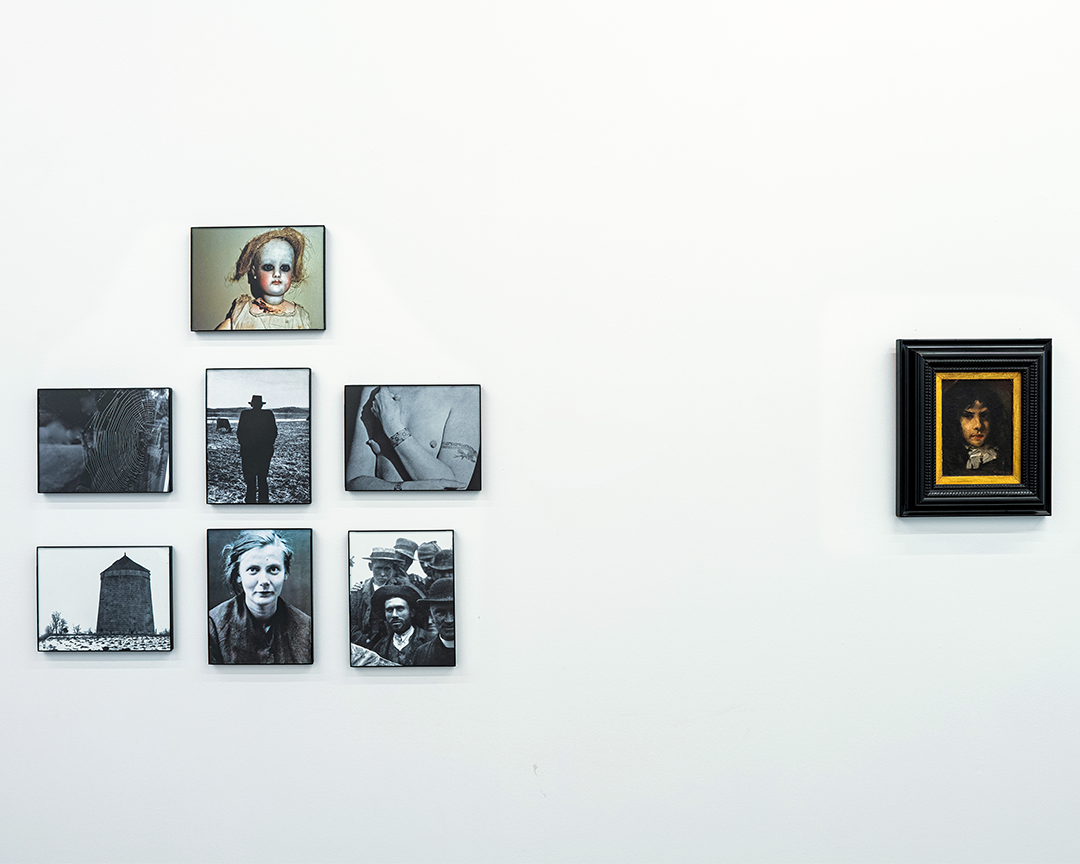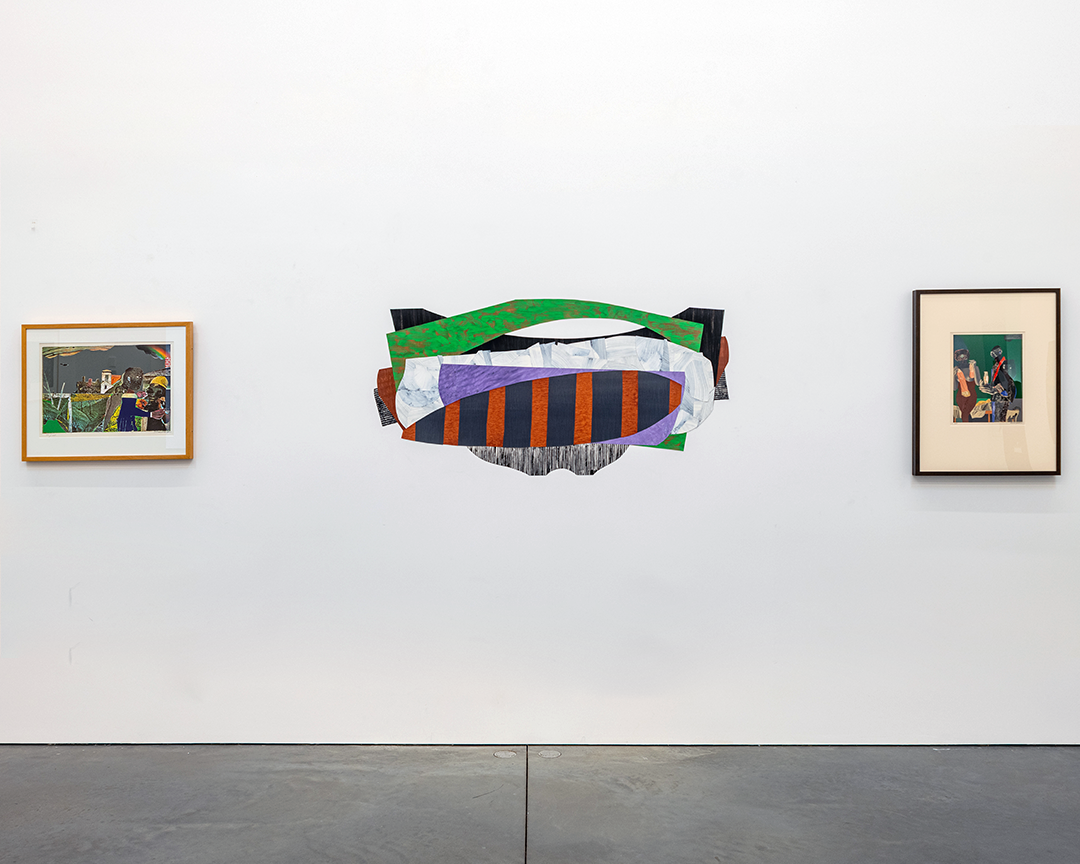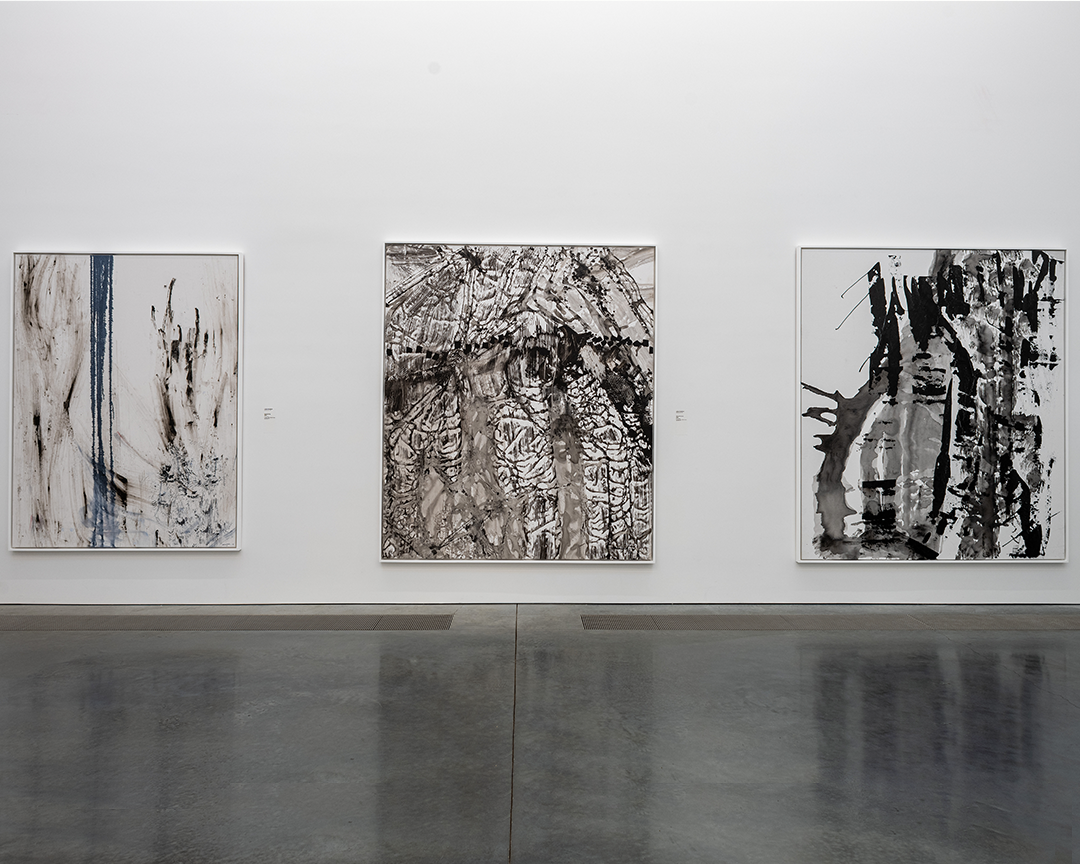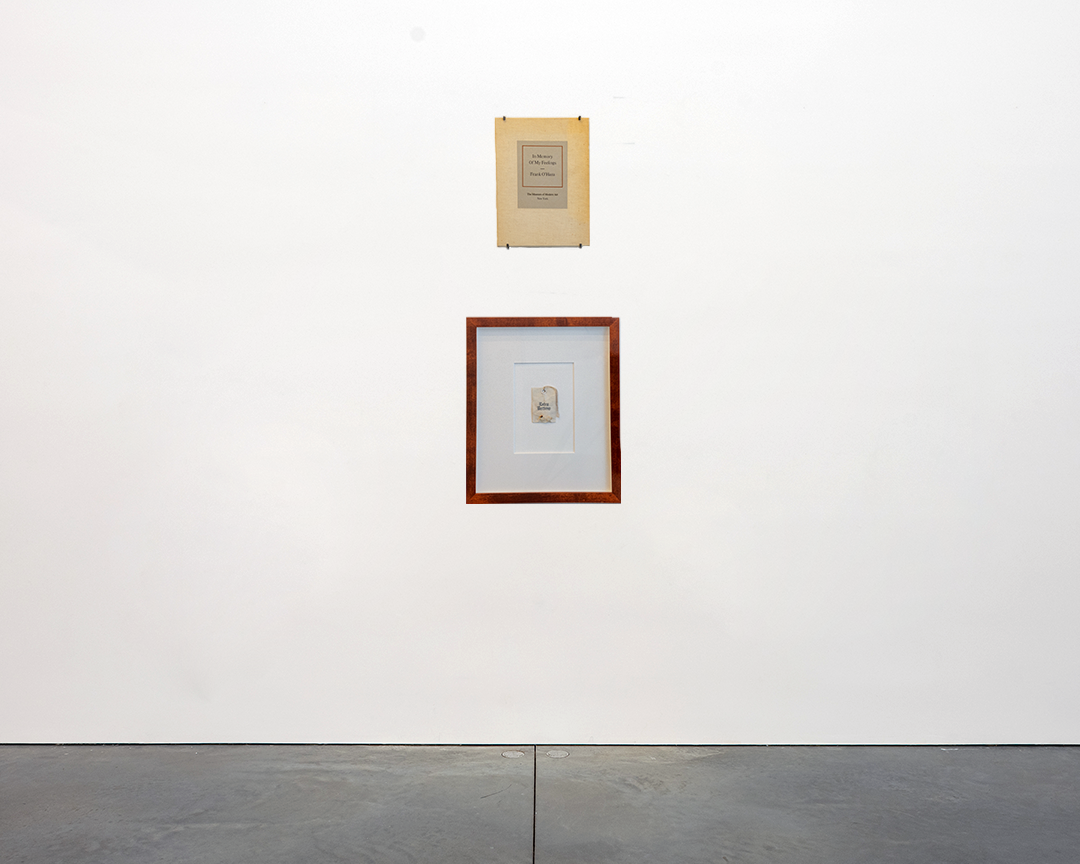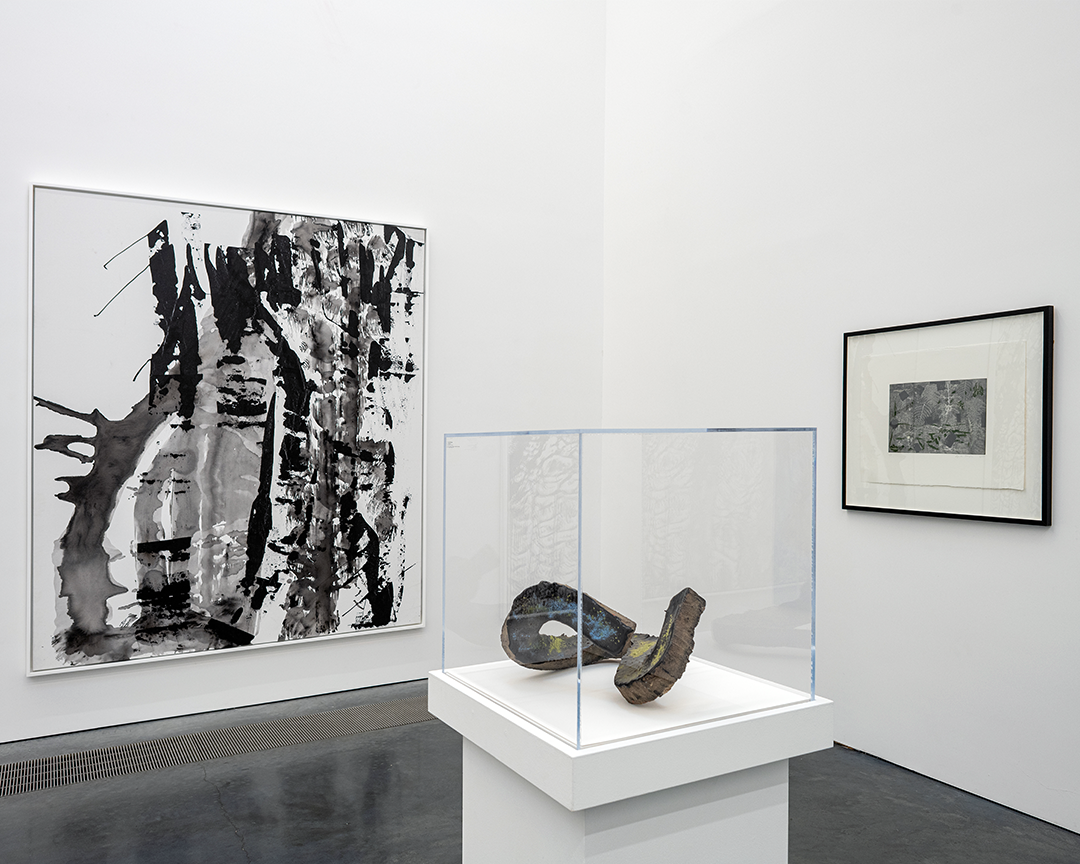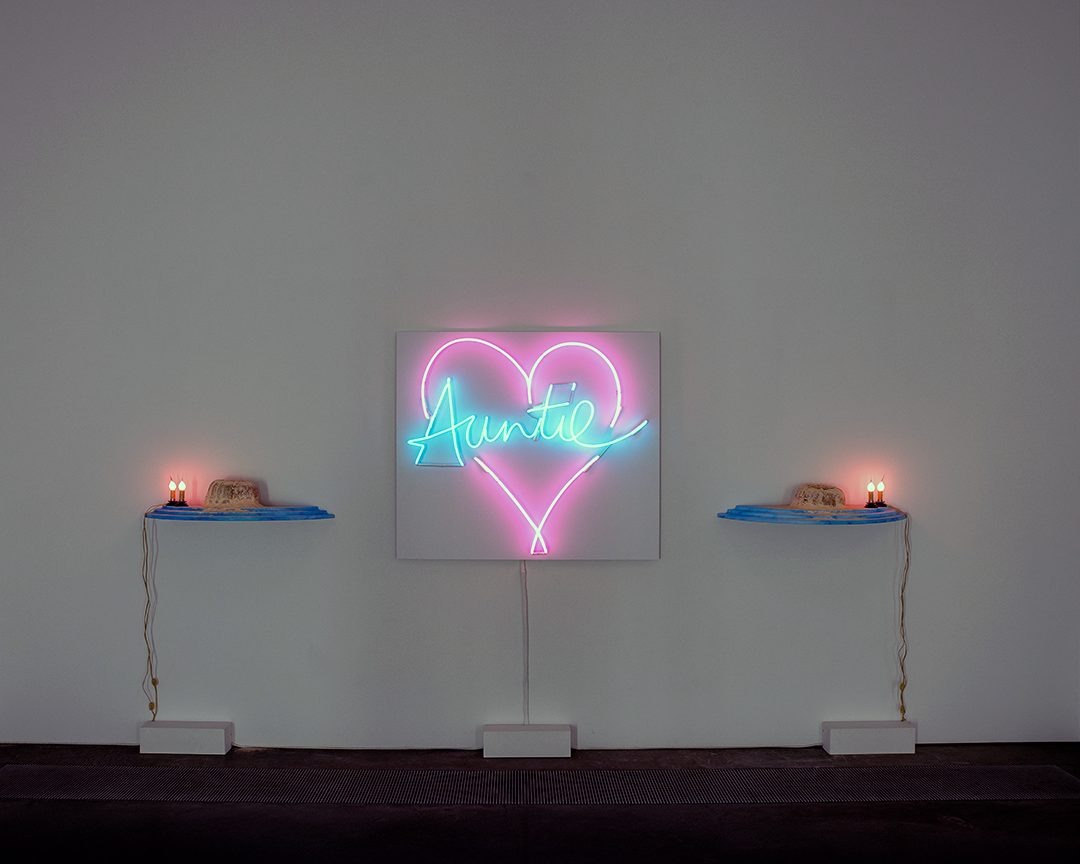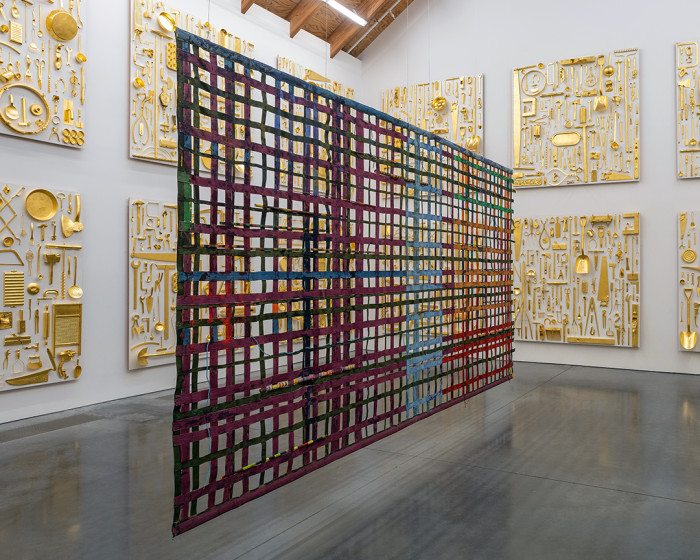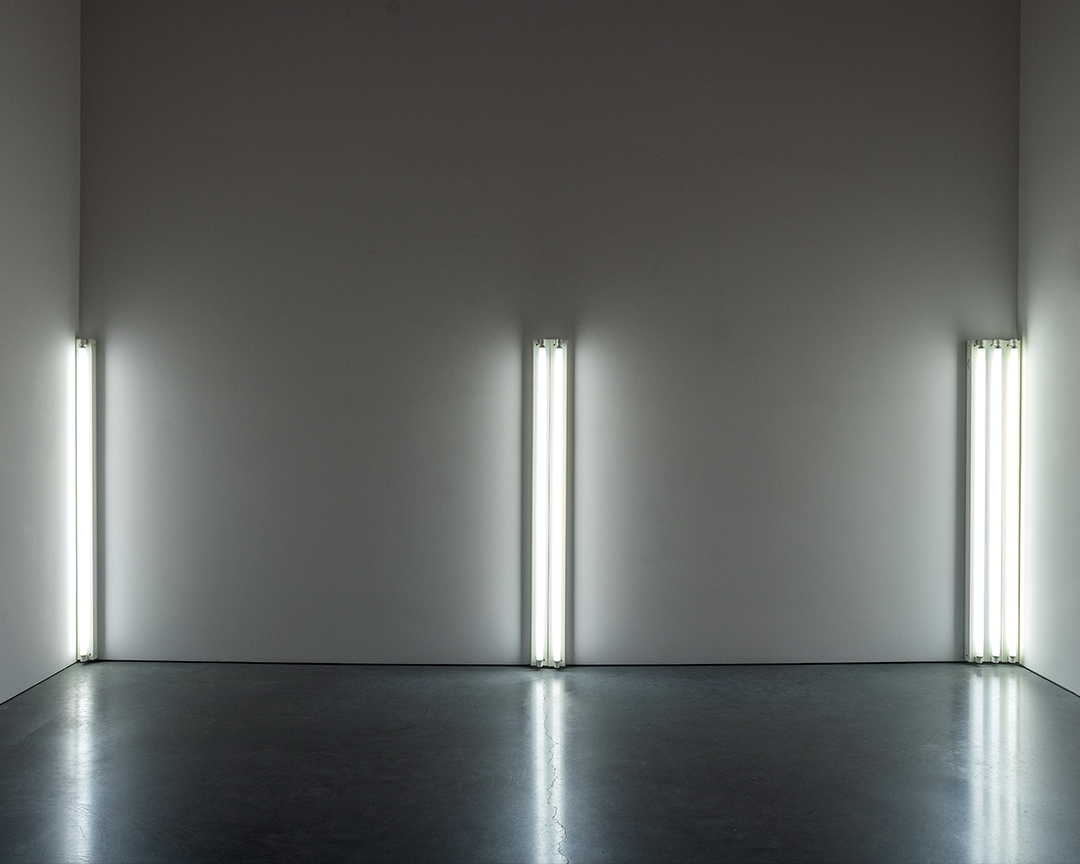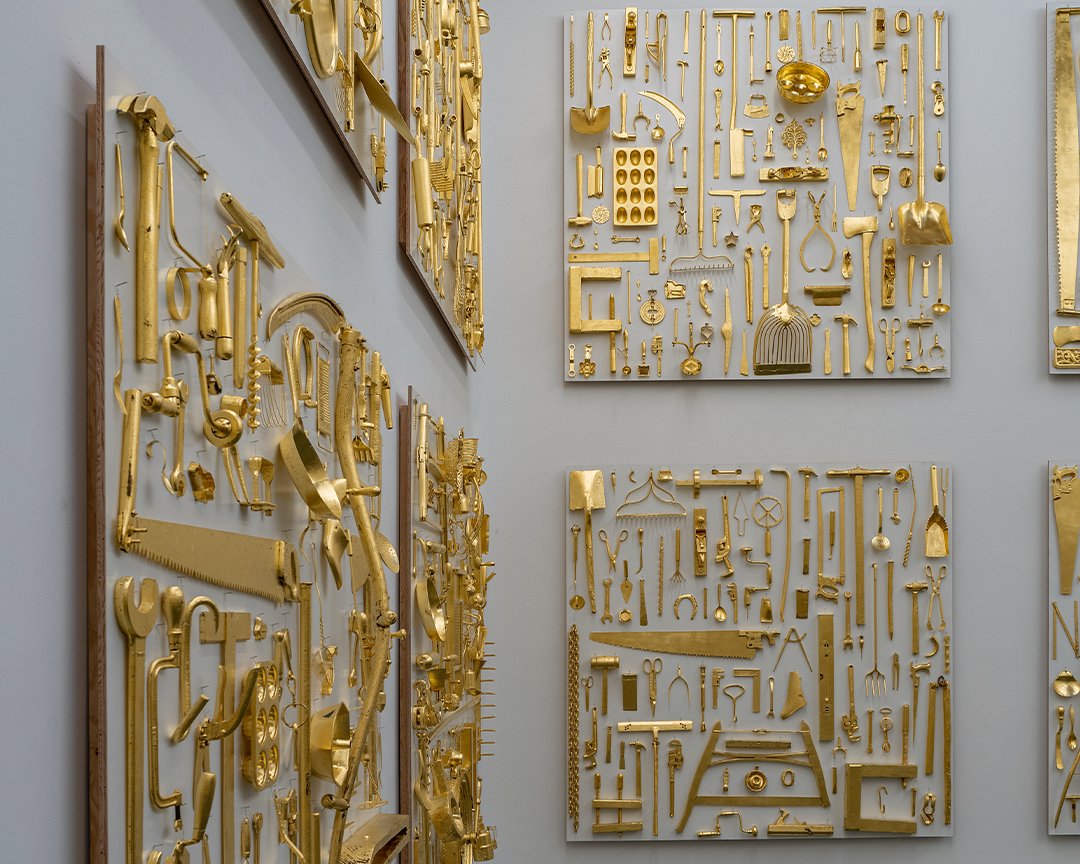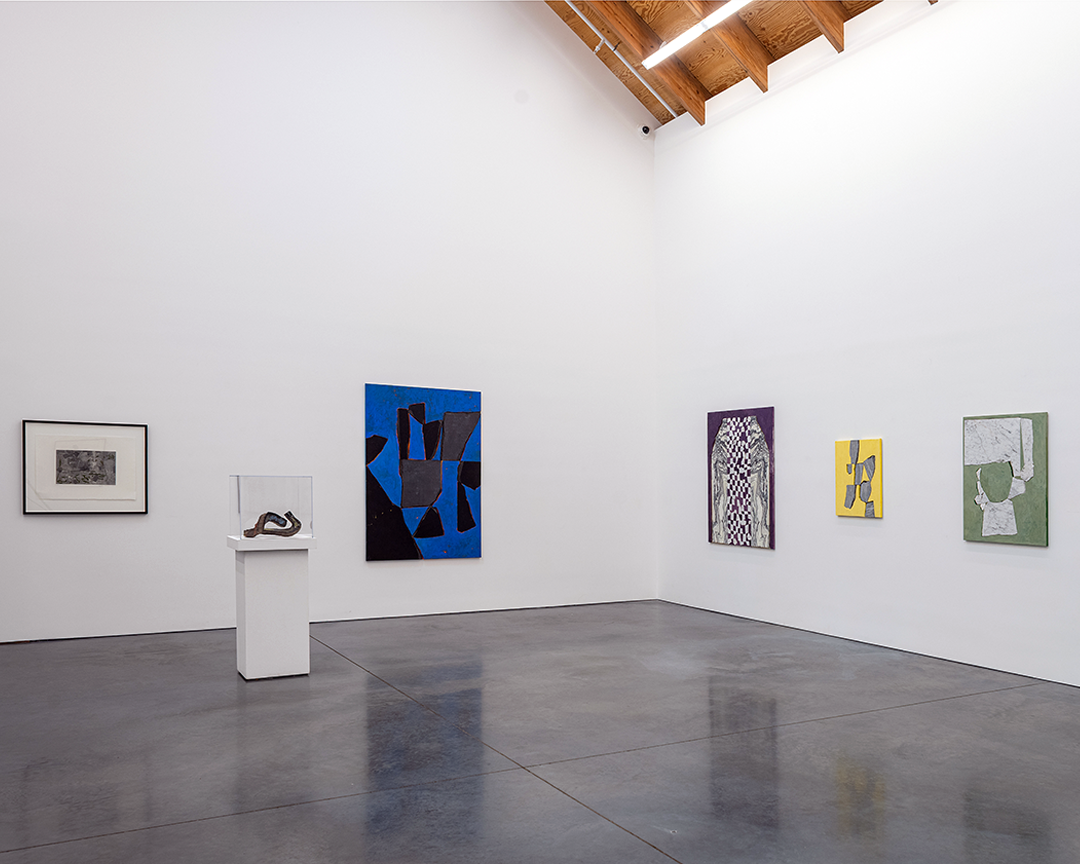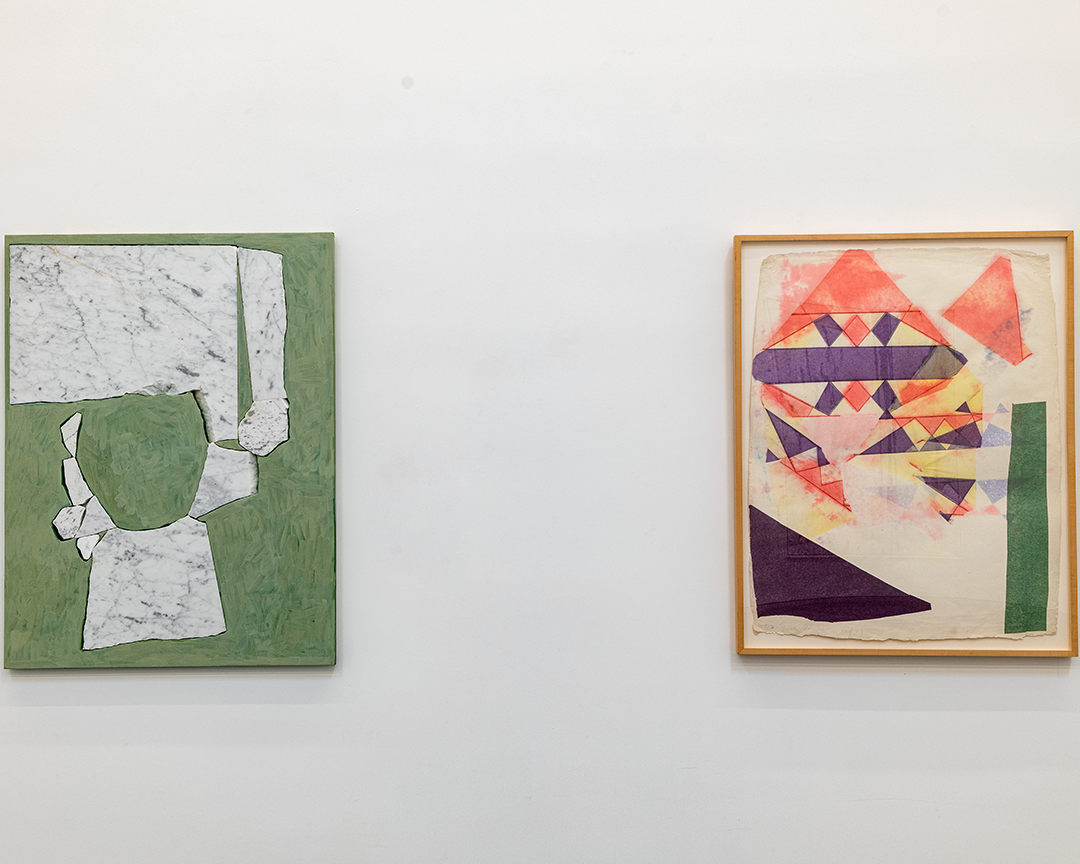Celebrating the Museum’s 125th anniversary, this landmark exhibition honors the East End’s rich artistic legacy and brings greater attention to major artists practicing here today. Forty-one renowned artists with deep local roots are selecting works from the collection to be shown along with their own. The exhibition, organized in three installations, is driving a renewed dialogue between the Museum’s past and future and reveals new perspectives of its collection through the lens of a diverse roster of artists.
The artists were invited to delve into the Museum’s 3,600-volume holdings online and at the Parrish to select works. Many artists reminisce on the relevance of the East End in their lives and approach to art. The result is a multilayered anthology of visual dialogues from unique perspectives, revealing a shared sense of community on the East End and continuing the artistic legacy of the region that radiates in the global art world. By pairing their work in unexpected and creative manners with work by Museum collection artists from the past and present, the participants crafted new narratives that explore perception and perspective, place and identity, formal connections, or personal and professional relationships.
Artists Choose Parrish is organized by Corinne Erni, the Lewis B. and Dorothy Cullman Chief Curator of Art and Education and Deputy Director of Curatorial Affairs, with additional support from Kaitlin Halloran, Assistant Curator and Publications Coordinator, and Brianna L. Hernández, Assistant Curator.
Explore the Exhibition Archive →
PART I A
Nanette Carter identified works dating from the mid-1900s until today that are rooted in abstraction—which she defines as a form of liberation—by artists including Perle Fine, Mary Heilmann, Theo Hios, Betty Parsons, and Esteban Vicente. Showing her large-scale abstract collage work Cantilever #53, 2020, alongside Romare Bearden and her Sag Harbor neighbor Frank Wimberley, Carter also pays tribute to two African American artists who greatly influenced her practice as a collage artist.
Pamela Council felt an affinity for Dan Flavin through their practice involving neon—pairing Auntie, 2021, with Flavin’s the nominal three (to William of Ockham), 1963—and through place: Council’s family was deeply involved to the Baptist Church in Bridgehampton, now Dia Art Foundation’s Dan Flavin Art Institute.
Paired with Untitled (Extra Buttons), 1994, Robert Gober opted for a book of Frank O’Hara poems illustrated by 30 artists because he has been reading the poet’s work.
Mary Heilmann chose works as tributes to friends, fellow students, and neighbors on the East End, New York, and California, including Louisa Chase, Susan Rothenberg, and Chuck Close with his portrait of her friend Ross Bleckner. A work by William King is a dedication to a longtime resident of the Hamptons and the only teacher at Berkeley who supported her radical departures within a conservative art department. Heilmann shows a single work, Narrow Lane # 3, 2001, inspired by the view from her Bridgehampton home.
Sam Moyer selected works by artist Lynda Benglis, whom she credits not only for having a direct and lasting impact on her work, but for introducing her to the North Fork of Long Island—a place that has inspired Moyer for years. Three works by Benglis—a papier collé, monoprint, and mixed medium sculpture—are shown with Moyer’s work in various media including black slate, marble, and plaster-coated canvas.
Installed as a grid on the four walls of a single gallery, Ugo Rondinone’s the alphabet of my mothers and fathers, 2022, is a 26-panel work comprising pre-industrial farming and kitchen tools he found on farms and at garage sales on Long Island, gilded and arranged on white painted plywood. In a juxtaposition both contradictory and complementary, he selected Alan Shields’ Devil, Devil, Love, 1970—a grid of colorful painted belting, beads, and dowels that will hang from the ceiling.
Cindy Sherman pairs two works from her groundbreaking photo series Untitled Film Stills (1977–80) where she casts herself as characters from film archetypes and female stereotypes, with portraits of women from the 1950s.
Leslee Stradford paid homage to Robert Motherwell through her four large-scale abstracts.
Michelle Stuart based her selections on a shared feeling she describes as “alone with the universe.” Three late-1800s paintings by Albert Pinkham Ryder, Ralph Albert Blakelock, and William Merritt Chase—all of whom she first encountered as a child at Los Angeles County Museum of Art—are presented with two never-before-shown works from her Women’s Series, comprising multiple photographs that reveal poetic narratives. Emaline Had Childhood Incidents, 2019, addresses how women have been historically misunderstood; Gothic Tale: Adeline, 2020, points to the disassociation felt by young people today.
PART I B
Tony Bechara selected works that defy the rectangular shape, including Leon Polk Smith’s oval painting and a tondo by Ilya Bolotowksy.
Ross Bleckner selected Eric Freeman’s Red Inside Green, 2005, as an in memoriam to his close friend, alongside his own painting Ram Dass, 2020.
Shinnecock Nation member Jeremy Dennis juxtaposes his version of the desecrated indigenous burial grounds in Southampton with a painting by William Merritt Chase. While the latter’s Shinnecock Landscape, 1894, was devoid of any Shinnecock people, Dennis’s photograph The Sacredness of Hills, presents an indigenous woman in traditional dress, looming large over a pristine landscape to affirm the continued presence of indigenous people.
Eric Fischl explores the relationship between artist and subject in portraiture—specifically, the focus of the subject’s gaze—through his selections, titled The Painting Stares Back: Portraits of Women from the Parrish Art Museum Collection. Of the 18 portraits of women and girls selected—painted between 1833 and 1970—all but two stare back; and all but two were painted by men. Fischl pairs these with his portrait of Joan Didion, three nudes including April in Paris, 1998, and Portrait of An Artist as a Woman, 1989—where the artist comes face to face with himself as the female subject.
Claude Lawrence, who is also a musician, chose Jackson Pollock for both his approach to painting and love of jazz.
In Paris, 1988, Robert Longo saw Frank Stella’s monumental works of brutally twisted metal evoking a car crash. Inspired by the artist since then, he selected Stella’s Illustrations after El Lissitzky’s Had Gadya: Back Cover, 1982-1984, which Longo describes as a collision and explosion through shapes and color. Likewise, Longo’s charcoal drawing Untitled (Nascar Crash, Daytona), 2021 depicts a self-destructive American pastime.
Eddie Martinez found common ground with artists of previous generations, highlighting largely unfamiliar, pre-1970 collection works by artists including Wilfrid Zogbaum, Abraham Hankins, and Frederick Stuart Church.
Enoc Perez connected Hans Hofmann’s Image in Green, 1950, with his abstract yet realistic work Dorado Beach Hotel, Puerto Rico, 2023—describing both as full of promise.
Through myriad topics, periods, and styles, Hank Willis Thomas explores how framing and context influence what and how we see. Two retroreflective prints, inspired by Josef Albers and Augusto Garau’s color theories, reexamine the charged language of color such as “white balance” and “color correction,” while Two Dancers, 2018, created with soccer jerseys, offer new interpretations of Matisse’s work of the same name. Resistance in Black, 2021, Thomas’s black Carrara marble sculpture of an outstretched arm and claw evoking a West African resistance movement, is shown alongside Arlene Wingate’s Eve, n.d., a portrait in white marble, positing that the definition of “hero” or “villain” depends on who is telling the story.
Nina Yankowitz takes over an entire gallery to literally offer alternate perspectives for experiencing art: Reclining lounge chairs invite viewers to look up at works by Tara Donovan, Rashid Johnson, Louisa Chase, Mary Heilmann, and Vija Celmins; a 7-foot platform allows a view from above of a visual sound score woven into a rug. Seated in a heavy chair with tiles, viewers confront Chuck Close‘s self-portrait, while small works hang at tilted angles in the distance. Yankowitz chose works relevant to life in America today, including Jackie Black’s Last Meal (Series), 2001–2003, 24 photographs of meals requested by death-row inmates, paired with Yankowitz’ uncanny sculptural paintings of body parts protruding from the wall to imagine “what’s on the other side.”
Joe Zucker’s installation on red burlap is an acknowledgement of Donna de Salvo discovering that Samuel Parrish had used red burlap on the Museum walls, which she recreated in A Museum Looks at Itself, a 1992 exhibition that surveyed the Museum’s collection and history. Zucker paired his large scale work Regatta 8, 2016, with a wide range of works that deal with maritime themes, including Harunobu Suzuki’s Japanese woodblock print Cutting the Lotus, ca. 1760; Thomas Moran’s Untitled (Fishing boat on storm-tossed sea; after Harry Chase), 1890; Betty Parsons’ Untitled, 1927; Nicolai Cikovsky‘s The Harbor Scene, ca. 1945; John Button’s SS Cristoforo Colombo, 1961; Malcolm Morley’s Thor I Loading in Richard’s Bay, 1998; and peter campus’ Passage at Bellport Harbor, 2010.
PART II
August 20, 2023–February 4, 2024
Learn more →
Marina Adams, Alice Aycock, Vija Celmins, Rachel Feinstein, Ralph Gibson, Sheree Hovsepian, Suzanne McClelland, Alix Pearlstein, Ned Smyth, Donald Sultan, John Torreano, Stanley Whitney
PART III
October 29, 2023–February 18, 2024
Learn more →
Richard Aldrich, Joanne Greenbaum, Virginia Jaramillo, Rashid Johnson, KAWS, Mel Kendrick, David Salle, Sean Scully, Amy Sillman
EXHIBITION SUPPORT
The Artists Choose Parrish exhibition is made possible, in part, thanks to the generous support of the Estate of Mildred C. Brinn; Bank of America; Stephen Meringoff in honor of Robin and Fred Seegal; The Robert Lehman Foundation; Sandy and Stephen Perlbinder; Agnes Gund in honor of Dorothy Lichtenstein; Goldman Sonnenfeldt Foundation; Jennifer and Sean Cohan; Susan and Timothy Davis; Alexandra Stanton and Sam Natapoff; Fern and Lenard Tessler; Jacqueline Brody; The Evelyn Toll Family Foundation; Martha McLanahan; Herman Goldman Foundation; Fred Schmeltzer; Scott and Margot Ziegler; and Amy Oppenheim.
We are also grateful to Gladstone Gallery and Ryan Lee Gallery, both in New York, for their in-kind support.
The Parrish Art Museum’s programs are made possible, in part, by the New York State Council on the Arts with the support of Governor Kathy Hochul and the New York State Legislature, and by the property taxpayers from the Southampton School District and the Tuckahoe Common School District.
![]()


